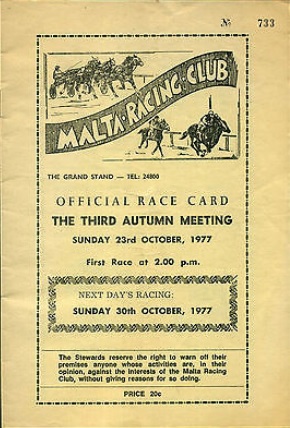Records indicate that the idea of a racecourse on the island was first muted in 1868, although races were certainly being staged almost 30 years before this date. The Sporting Magazine regularly reported results from the island from 1840 onwards, with an unfortunate incident occurring at the meeting on 23rd August 1843 when Mr Williams, the Second Master of her Majesty’s ship Savage, ran onto the course and was knocked unconscious by the last horse in a race. Amazingly, Lieutenant Baker, commander of the same ship was also knocked down by the same horse but was able to walk away from the incident. Results from the 1840 meeting are shown below:-
Tuesday 3rd November 1840
Malta Ladies Purse
1. The Wandering Boy, brown horse 10st 2lbs owned by Captain Ormsby
2. Mustard, chestnut horse 10st 2lbs owned by Mr Duff
3. Conrad, bay horse 11st 2lbs owned by Mr Rooke
Malta 100 dollars Match
1. The Ape, brown horse owned by Mr Rooke
2. Old Clay, bay horse owned by Mr Mulock
The Gentleman’s Purse
1. Medora, grey mare 10st 12lbs owned by Mr Rooke
2. Zuleika, black mare 10st 6lbs owned by Mr Paton
3. Haaneena, grey mare 10st 6lbs owned by Mr Sedley
Wednesday 4th November 1840
Garrison Sweepstake
1. The Wandering Boy, brown horse 11st 2lbs owned by Captain Ormsby
2. Little Wonder, grey horse 11st 9lbs owned by Honourable H Cochrane
3. Mustard, chestnut horse 10st 2lbs owned by Mr Duff
Local Patrons
By the middle of the 19th century the Garrison races held at Citta Vecchia were annual affairs when the Stewards were led by Colonel John Peel, ably supported by Captain H G Bowden, W N Wallace of the First Battalion 60th Rifles and W C Clayton 84th Regiment. The results from the 1866 are shown below and give a flavour of the extent of the meetings.
Saturday 29th September 1866
The Palace Stakes of 1 sovereign each
1. The Cardinal, bay horse owned by Colonel J Peel and ridden by Major Meason
2. Fenech, grey horse owned by Mr W C Clayton and ridden by Clayton
3. Don Luigi, bay horse owned by Captain Bowden and ridden by Mr Goodeve
4. Skittles, black horse owned by Mr P Keck and ridden by Keck
The Floriana Stakes of 1 sovereign each
1. Charlie, chestnut horse owned by Mr Wallace and ridden by Captain Dundas
2. Bosh, chestnut horse owned by Mr Kirwan and ridden by Kirwan
3. Necromancer, grey horse owned by Mr Goodeve and ridden by Goodeve
The Pieta Cup (presented by the Malta Ice Works)
1. Maid Marion, bay mare owned by Mr Wallace and ridden by Clayton
2. The Cardinal, bay horse owned by Colonel J Peel and ridden by Major Meason
3. Nettle, bay mare owned by Mr Goodeve and ridden by Goodeve
St Elmo Stakes of 1 sovereign each
1. Don Luigi, bay horse owned by Captain Bowden and ridden by Mr Caldron
2. Fenech, grey horse owned by Mr Clayton and ridden by Captain Dundas
3. Master Strahan, grey horse owned by Colonel Peel and ridden by Major Meason
Malta Purse of 5 sovereigns
1. Fenech, grey horse owned by Mr Baldacchino
2. Gipsy owned by Mr Borg
The races, organised by Officers of the Garrison, were well attended and gave the citizens of Valletta great pleasure on a course at Citte Vecchia, within easy reach of the centre of the city. After these early days of racing, members of the Navy and Military joined forces with local landowners to further develop the idea of building a permanent racecourse in 1868. Malta’s First Race Committee was formed to move the project along, although money was tight and their initial plans were rejected. However, they persevered and were successful in funding a 14 furlong track at Marsa, the longest in Europe at the time, with the inaugural two day meeting staged on 12th and 13th April 1869. That fantastic opening meeting featured the 2 mile Malta Grand National Steeplechase.
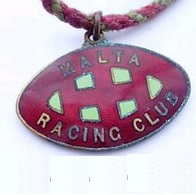
By the early years of the next decade the two day meeting consisted of a large number of valuable Handicaps. Principal results of the two day meeting on 19th and 20th December 1874 are shown below:-
20th December 1874
The Melita Handicap Stakes 20 sovereigns added (once round)
1. Selim, grey horse owned by Captain Leigh and ridden by Leigh
2. El Fil Fell, bay horse owned by Mr Lonsdale and ridden by Mr de Lancy
3. Prince Charlie, chestnut horse owned by Captain Leigh and ridden by Cosburn
The Marsa Handicap Stakes over 6 furlongs with 20 sovereigns added
1. El Fil Fell, bay horse owned by Mr Lonsdale and ridden by Gasefulid
2. Implicit Confidence, grey horse owned by Mr de Lancy and ridden by de Lancy
3. Medora, bay mare owned by Mr Foster and ridden by Spiro
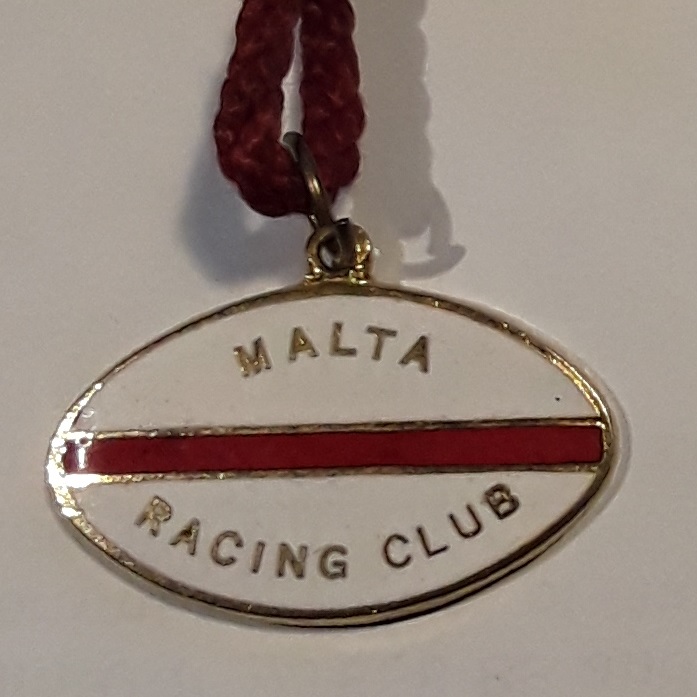
However, the meeting on Tuesday 13th and Tuesday 20th November 1877 was amazing in its variety and extent. It featured the Royal Navy Cup, the Lilliputian Stakes, the Valletta Derby, the Malta St Leger and the St Georges Plate in a packed 2 days of racing.

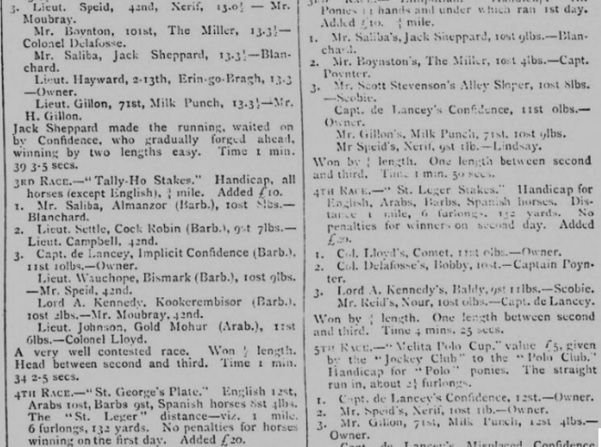
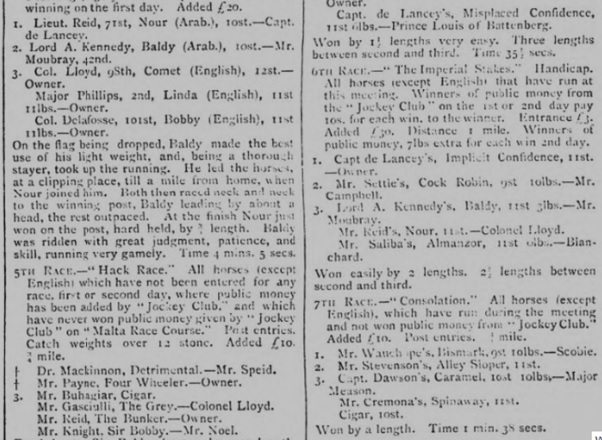
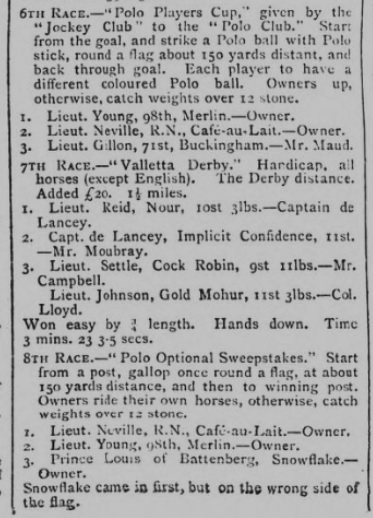
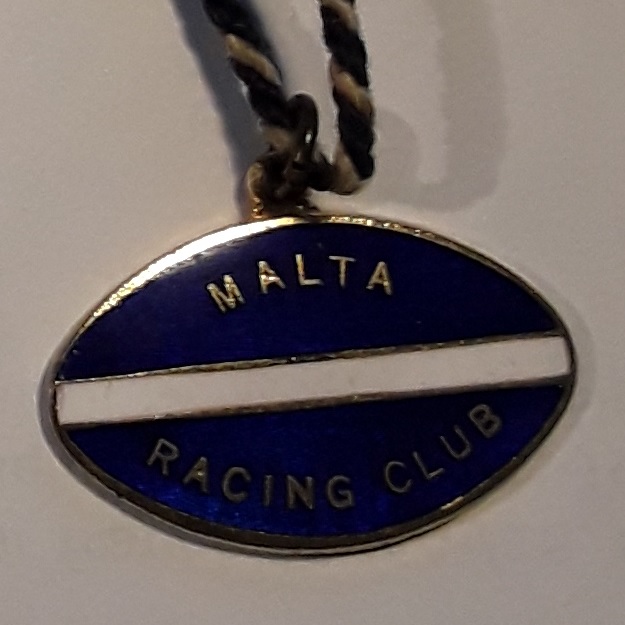
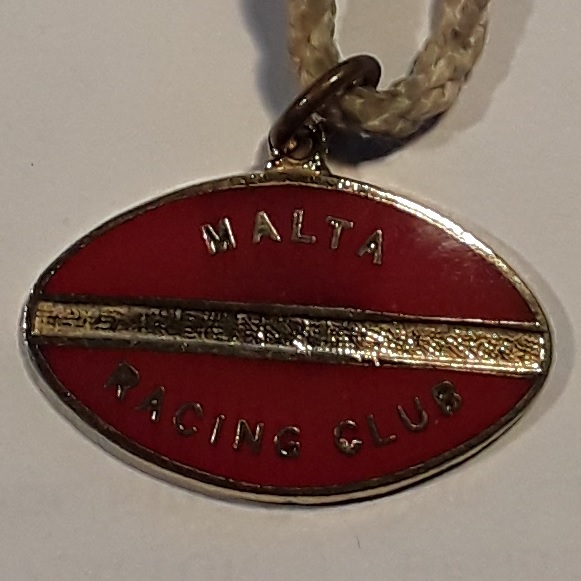
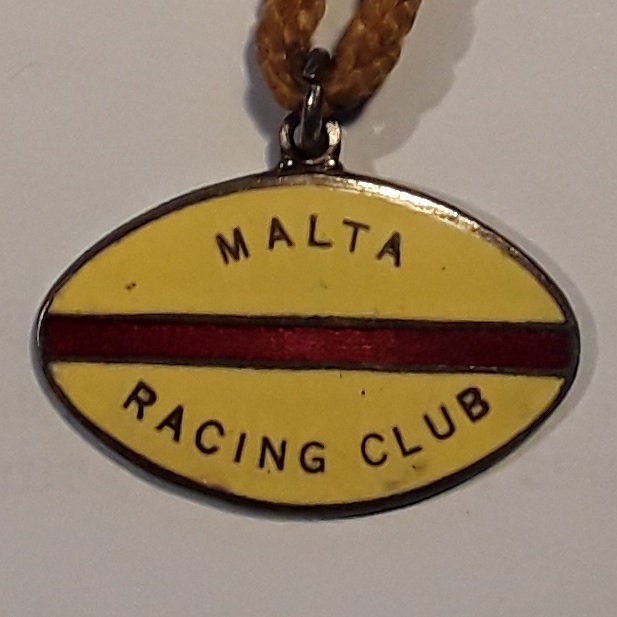
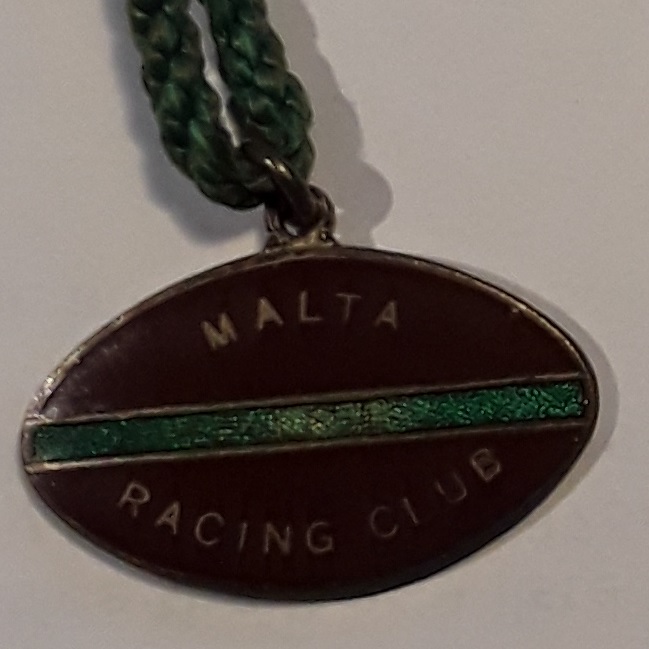

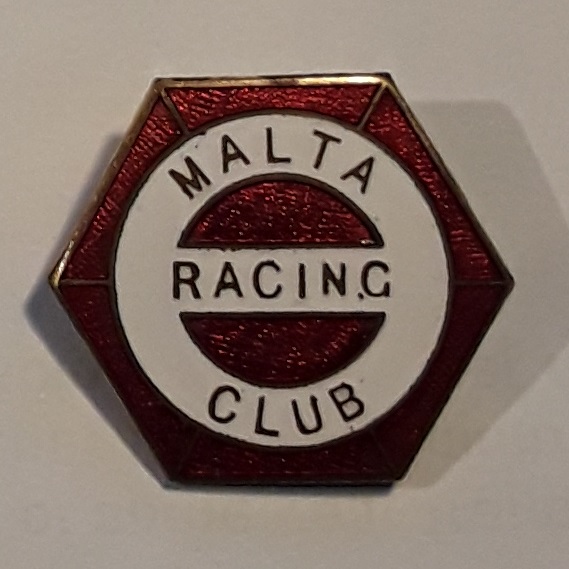
Although interest in racing took a turn for the worse during and immediately after the First World War, things began to pick up in 1929 when the British Servicemen stationed on the island began to take a greater interest in horse racing. Thoroughbreds were imported from North Africa and a stock began to be built up on the island once more. In the early days of the 1930s racing was back in full swing and in 1934 the inaugural Malta Racing Club Challenge Cup was launched in 1934. Within 5 years turmoil had returned and the racing stock was slaughtered. There was an interesting development in 1943 when traditional horse races returned to the area on Saturday 14th and Sunday 15th August 1943, albeit on the sister island of Malta called Gozo. The horses were ridden bareback without bridles or trappings, with just a halter to guide the horse, over a bumpy, rocky course including roads and pavements. Furthermore, there were races for asses and mules with 12 year old children acting as jockeys. On the main island races returned on 29th December 1945, and afterwards trotting races began to become more popular. In 1949 Princess Elizabeth, later to become Queen Elizabeth II, visited the island and watched races organised by the Malta Racing Club.
A new racecourse was developed in July 1980 with the inaugural meeting taking place in March 1981 under the direction of the Marsa Race Course Management Council. At the meeting on 15th November 1982 an autostart system was introduced, while a photo-finish system began to operate in 1983, with starting gates introduced in 1985. By Februray 2003 a floodlight system allowed racing to take place throughout the year.
